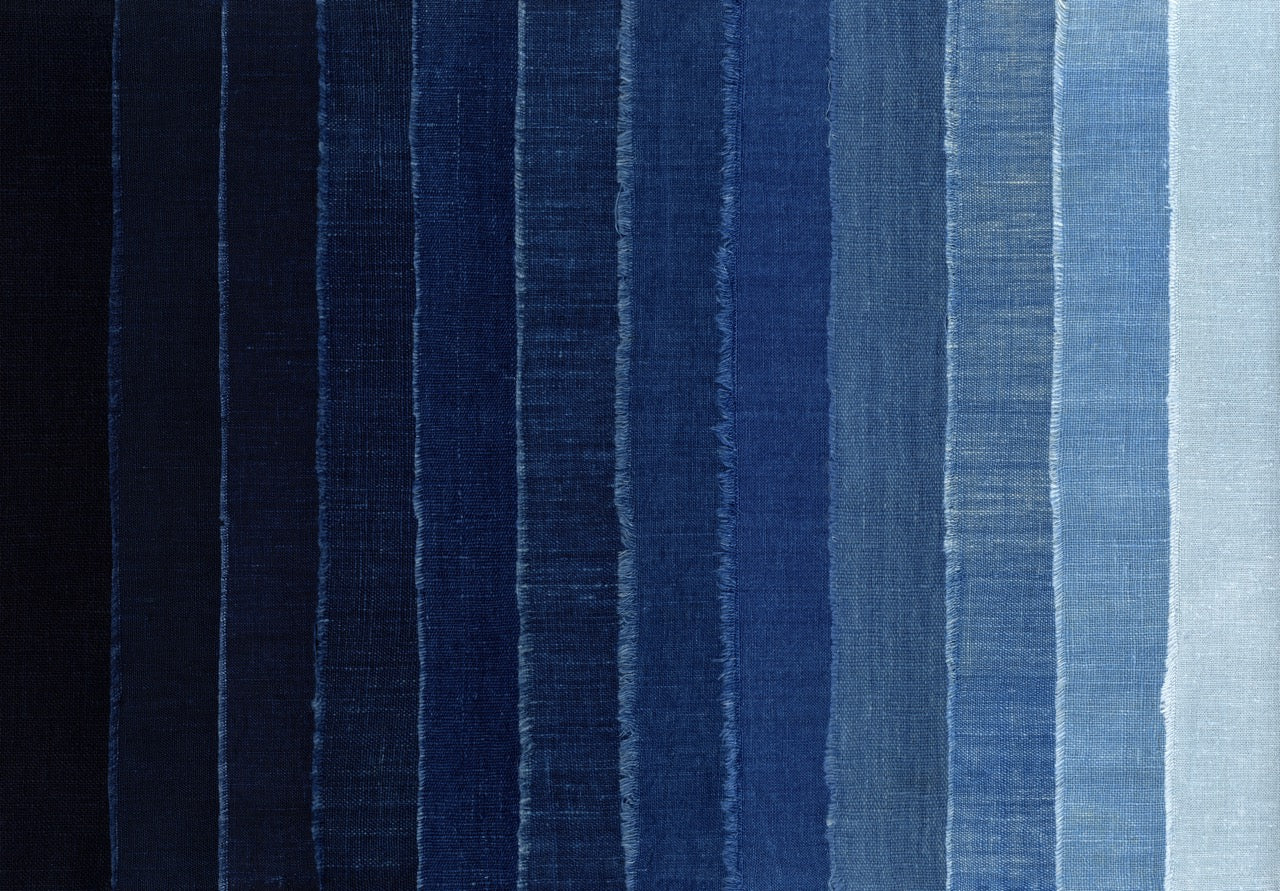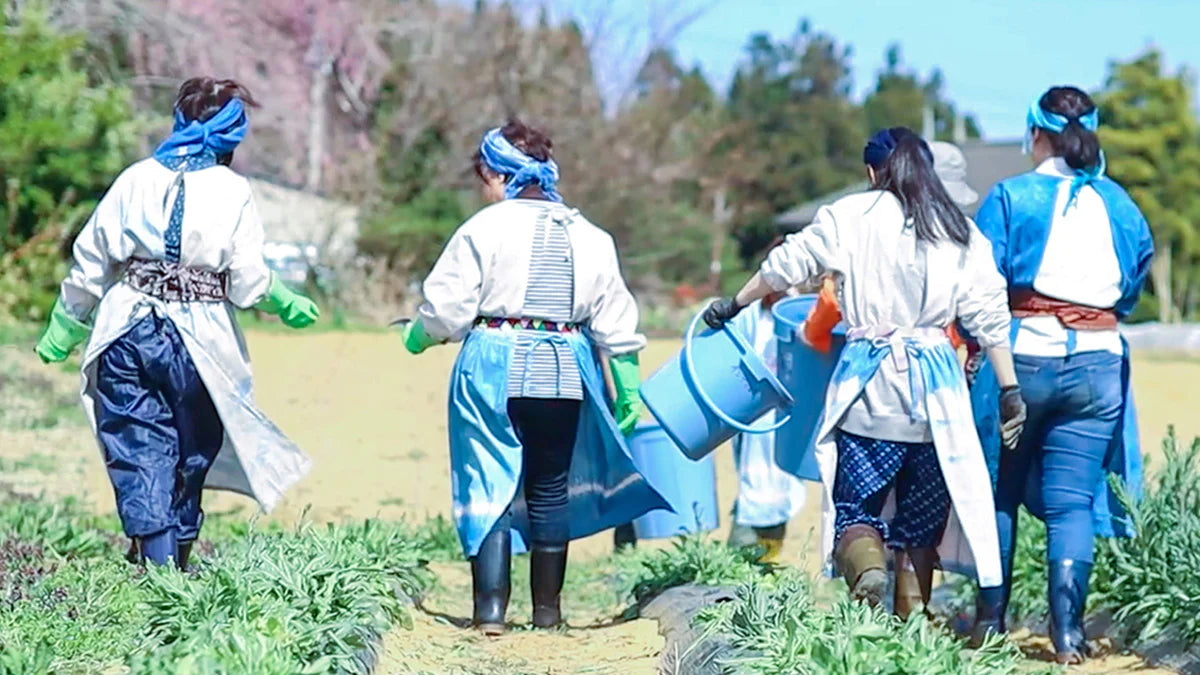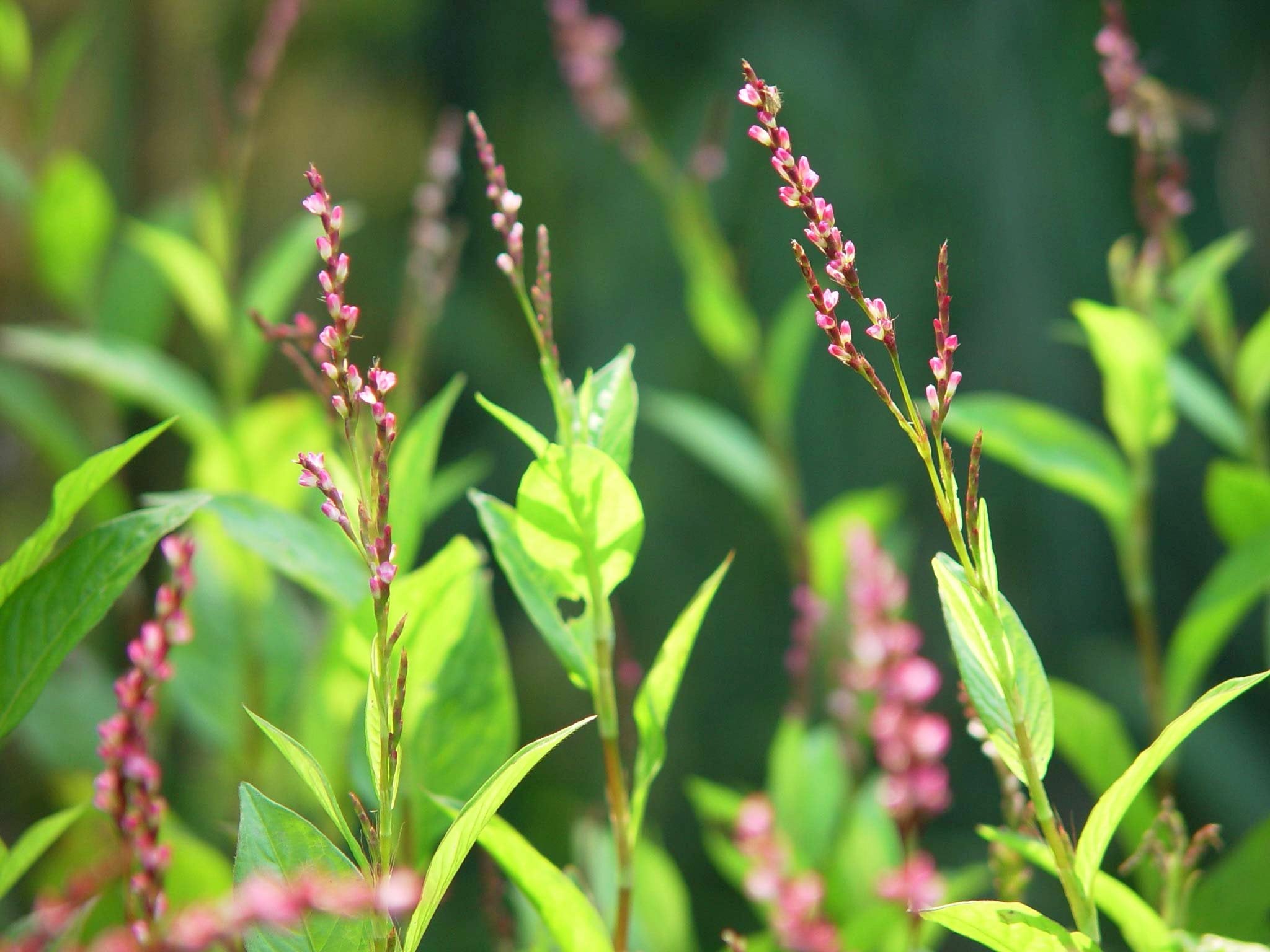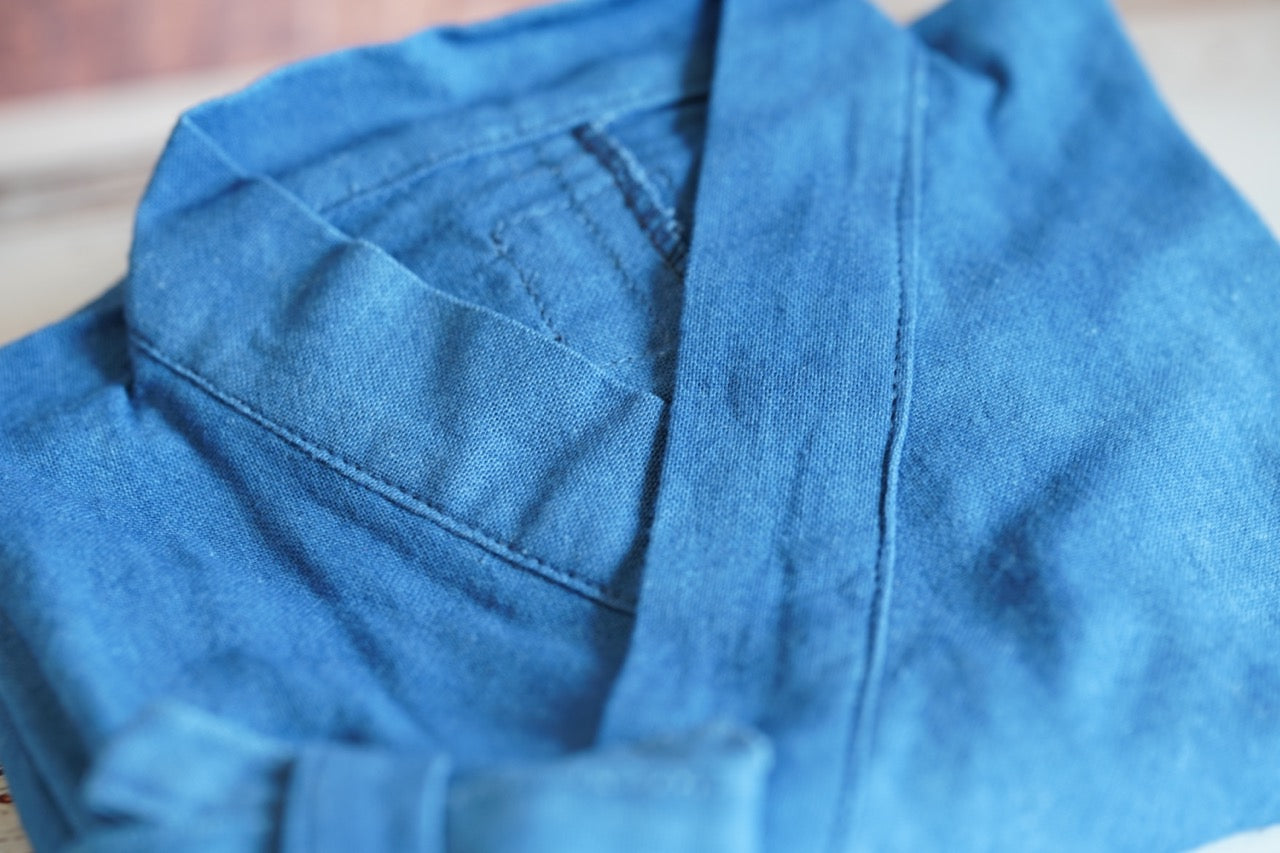Japanese indigo dyeing is a time-honored artistry deeply saturated in the cultural tapestry of Japan. Guided by the ancient techniques of generations past, artisans meticulously cultivate and harvest the Japanese indigo plant, its leaves concealing the secret to this enigmatic color. Through an alchemical dance of fermentation and oxidation, the indigo pigment awakens, imbuing fabrics with a cobalt spectrum ranging from ethereal azure to midnight navy.

What Is Traditional Aizome Japanese Indigo?

In Japanese, indigo dyeing is known as “aizome” and the long and intricate process all starts with a simple source material; “ai”, the leaf of the Japanese indigo plant (Perisicaria tinctoria). Planting, cultivating, and harvesting the ai is a responsibility not taken lightly by traditional dye artisans known as "aishi," and the process of making just one batch of dye takes at least one year.

In the cycle of Japanese indigo dyeing, a meticulous rhythm unfolds. Come March, indigo leaves are tenderly planted, their growth nurtured over the course of five months. As the calendar turns, leaves are carefully harvested. Over the next three months, the harvested leaves embark on a transformative journey, undergoing a fermentation process, slowly developing their coveted pigments, and uncovering their hidden potential.

The result is “sukumo,” a raw material that will determine the vividness, hue, and quality of the end result. Lye fermentation reduces the mush of sukumo to a liquid state, and finally, the usable indigo dye is ready to tell its own story.

Where Did Traditional Aizome Japanese Indigo Dyeing Flourish?

Historically, Aizome Indigo Dying is believed to have bled into Japan via the Silk Road nearly 1,400 years ago and captivated the adoration of the elite class, eventually becoming exclusively used in the garments of the Imperial Court in the Heian Period (794 - 1185). Due to its unique fabric strengthening, antibacterial, and insect-repelling properties, it was eventually adopted for use by samurai during the 12th century.
Indigo cultivation found a particular stronghold in Awa Province, today known as Tokushima Prefecture, and flourished thanks to the unique geographic conditions of the fertile island land. The government at the time invested heavily in the lucrative production of the dye and year by year, the quality of the dye improved. Even now, ahishi dyers claim that with each batch of dye, they continue to refine their techniques, and even hundreds of years later, they still strive to come closer to perfection.
Where Can I Find Traditional Aizome Japanese Indigo Today?

Today, Japanese Indigo is ubiquitous in Japan, with traditional workshops found across the country. Tokushima is still regarded as the indigo capital of Japan, however, there are also prominent aizome hubs in places such as Miyagi, Kanagawa, and Gifu. Many traditional workshops offer tours, and at some places, you can even try your hand at indigo dyeing to make your own unique masterpiece!
What Are the Benefits of Aizome Japanese Indigo Dyeing?

Japanese indigo isn’t just fashionable, it is also incredibly functional too, hence it remains in high popularity even today. Japan is known to have hot, humid, and sweaty summers, which is why the anti-bacterial properties of aizome are perfect for keeping ominous odors at bay. The gentle and natural characteristics of the dye are also said to be effective for those who suffer from rough or sensitive skin or those with conditions such as eczema.
Due to the insect-repellent nature of fabric dyed with indigo, many gardeners and landscapers in Japan prefer indigo-dyed garments for work as not only are they light and easy to wear, but they also keep swarming pests from making them a snack.
As far as sustainability goes, while aizome may be blue in color, it is more green for the earth in the long run as it is a much more sustainable practice than fast-fashion garments dyed with harsh chemicals. Additionally, by supporting local artisans, you are supporting the continuation and longevity of these ancient techniques and practices.
Can Aizome Japanese Indigo Fabrics Fit With Modern Fashion?

While Aizome may be a thousand-year-old art, it is still as relevant as ever in the Japanese fashion scene and offers a chic, refined touch to any wardrobe. Take, for example, this aizome T-shirt from Indigo Kesennuma. Like the deep cerulean hues of the sea around Kesennuma City in Miyagi prefecture, the deep blue color conjures oceanic imagery, and the handmade embellishments of the shirt give it class and poise.
For something that airs on the more feminine side, this indigo dyed stall dyed with rare pastel hues from Indigo Kesennuma or this scarf made in collaboration with Muitt are wonderful accents to any outfit and could be complimented perfectly by a stunning pair of Otani Ware indigo earrings by Onishi Toki.
If, however, you are looking to add a touch of aizome to your interior decoration, an indigo curtain from Matsuda is the perfect splash of color to any interior and depicts an iconic image of a turtle and a Japanese crane.
How to Take Care of Japanese Indigo Fabrics

With high levels of functionality and fashion, the trade-off with aizome garments is that they come with a slightly higher level of care when compared to other articles of clothing. Not to worry, it isn’t incredibly difficult, just a few extra steps to ensure that your aizome pieces will stay looking radiant for years to come.
Do:- Hand wash for the first few washes with cold or lukewarm water.
- Hang dry only! Do not use a machine dryer as it could damage the overall color.
- Only use soap or detergent in small quantities, and not every time. The dye is anti-bacterial and so the water will do most of the work.
Don't:
- Use bleach of any kind. If you do, you might as well be wishing those brilliant blues sayonara!
- Wash with other clothes, particularly for the first few washes. Just like a new pair of blue jeans, the garments may bleed.
Remember, each aizome garment will likely have different care instructions, so please check the recommendations of the maker for details.
Aizome Japanese Indigo Far and Beyond
 Aizome not only reflects a rich cultural heritage but also serves as a testament to the timeless allure of traditional craftsmanship in a rapidly evolving Japan. Through intricate indigo dyeing techniques and profound connection to nature, Aizome embodies a harmonious blend of artistry, sustainability, and cultural identity. By embracing the lessons of this ancient craft, we can find inspiration to forge a more sustainable and culturally enriched path forward, where the threads of tradition are interwoven with the fabric of modernity.
Aizome not only reflects a rich cultural heritage but also serves as a testament to the timeless allure of traditional craftsmanship in a rapidly evolving Japan. Through intricate indigo dyeing techniques and profound connection to nature, Aizome embodies a harmonious blend of artistry, sustainability, and cultural identity. By embracing the lessons of this ancient craft, we can find inspiration to forge a more sustainable and culturally enriched path forward, where the threads of tradition are interwoven with the fabric of modernity.
